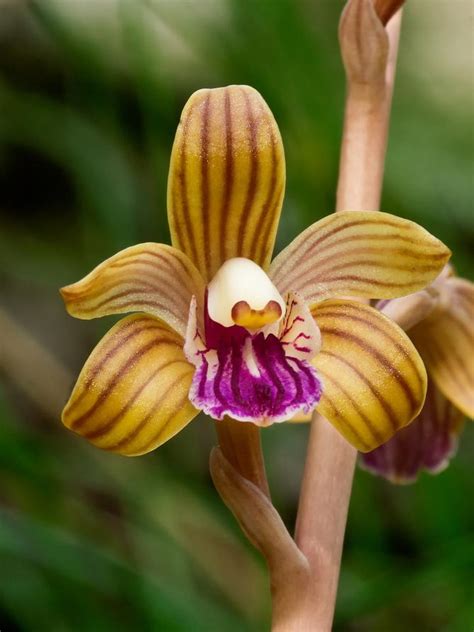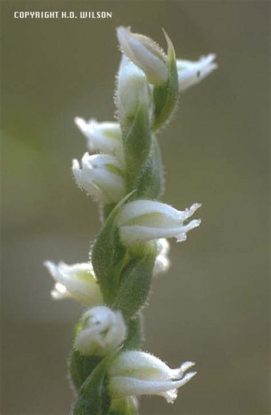
Your First Greenhouse
Whenever two orchid lovers (defined as anyone reading this column) get together for the first time, the question almost always comes up “Do you have a greenhouse?”. I must confess that it has given me great satisfaction for the last 35 years to be able to answer “yes”, despite the fact that maintaining a greenhouse can turn into a serious commitment, work-wise.
But it is an answer that overlooks a reality and demands a new response. We will explain.
I remember my first greenhouse and how excited I was to provide my beloved orchids a shelter. I was on a work assignment in the Philippines at the time, living in the Cordillera mountains, elevation one mile. All I really had to do was protect the leaves from direct sun, which would be especially damaging at that altitude, where the Texas Instruments factory and my job were located.
Building my greenhouse in the Philippines was no challenge at all. I devised a simple, screened enclosure next to my patio, and that did very nicely for the local orchids I was acquiring every weekend. But my enthusiasm for these beautiful plants soon outpaced the capacity of my little greenhouse, and very soon I had to hang plants outside under the overhang. Even so, they soon overflowed onto my patio. Clearly my plants were happy in their environment, and they thrived beautifully, as long as they were able to have partial shade.
In reality, I didn’t actually need to have a “greenhouse”. I LIVED in one. It was paradise — and, I was too focused on doing my job to realize it at that time.
Eventually my Philippine work assignment ended, and it was time to return to my regular job with TI in Dallas. Determined not to leave my orchids behind, I applied for the required Department of Agriculture import permits, and shipped the plants home in cardboard boxes.
The orchids didn’t have an opportunity to weigh in on this decision to leave their happy home. Had I allowed them voting rights they would surely have given me a resounding “No”! After all, what sane orchid would choose the brutal climate of Dallas over the ideal natural habitat of the Philippines?
Perhaps I should have allowed them a vote, because, sad to say, many did not survive the years it took me to learn how to take care of them in Dallas. I never had to “learn” much in the Philippines. Nature did it all.
But, on the positive side, many of them did manage to adapt. Today I still have some whose genetic progeny live on, although not thriving as they would have back in their natural home.
Over the last few years, I have come to realize that, just as in the Philippines, where I lived in a greenhouse for tropical orchids, I also live in a greenhouse here in Texas. It is a greenhouse for terrestrials, a family of orchids that have adjusted to the varied environments of our state.
Now, if someone asks me whether I have a greenhouse, I still answer “yes”, but my answer has taken on a larger meaning. I understand now that ALL of us HAVE a greenhouse, the one we call Planet Earth. Our fragile world is the greenhouse we all share, the biosphere we (and our orchids) need to survive. This is both yours AND my first and only greenhouse, and it is the biosphere our native (and worldwide) orchids have adapted to. And just like my greenhouses for the past 35 years, this Planet Earth greenhouse takes a serious commitment, also.
On a local level, our Texas-sized greenhouse has over 50 species of orchids. This year we in Dallas will have the opportunity to “check in on part of or our greenhouse” on June 5. That is the date when the Texas Master Naturalists will make their first trip of the year to Cedar Ridge Preserve to observe and tag the first emerging spikes of the Hexalectris species found there. We’re lucky that these local Hexalectris orchids are protected, and at least not immediately threatened by housing developments, agriculture, or climate change.

Spiranthes parksii (Navasota Ladies-tresses)
Orchid native to Texas
Other areas of our Texas-sized greenhouse have orchids, perhaps even more vulnerable, and have drawn the attention of researchers. In 2015 the Lady Bird Johnson Wildflower Center funded a research grant with the assignment of predicting where and how the Spiranthes parksii could continue to thrive in the “greenhouse” of central Texas where they exist now (Grimes and surrounding counties along the Navasota river). The Spiranthes parksii (Navasota Ladies-tresses), is Texas’ only orchid species with official endangered status, and is threatened with extinction because of urban sprawl, agriculture, and climate change.
Research like this provides important information for possible conservation easements that could preserve or provide a home for new or surviving colonies. Ground moisture was rated very critical in the study; ground moisture is greatly affected by climate change with its attendant increase in temperatures. Finding the right soil and fungi conditions and allowing for future moisture conditions is tricky.
A further complication of preserving this species comes from the fact that 90% of Texas land in private hands. Even with the endangered species status, the orchids have zero protection on private land. The sad news is that no matter their official classification, all orchid species native to Texas face the same threats as the Spiranthes parksii.
The best answer I have found for taking care of and protecting the orchids in this Texas-sized (and North American-sized) greenhouse is to keep more land out of agriculture and allow it to return to its natural state. With our growing population, the demand for agricultural land can be kept in check only if we are willing to decrease our demand for animal-based food.
More than 80 percent of the corn and 95 percent of the oats grown in the U.S. are allocated for animal feed. By switching to a plant-based diet we could feed 5 times our human population without need for additional agricultural land. We currently export 60% of soy grown in the U.S., much of it going to China to feed hogs and chickens. Just think of how much we could do as individuals to reduce the agricultural pressure on our endangered species, including the orchids we love. In fact, only by redefining our unsustainable western lifestyle will our Greenhouse Earth be able to survive and sustain us. This will require participation by all of us.
 Welcome to YOUR first greenhouse! It belongs to all of us and, indeed, maintaining it is still a serious commitment. Who will rise to the challenge of caring for it, so we all can live? The survival of all that we love is in our hands.
Welcome to YOUR first greenhouse! It belongs to all of us and, indeed, maintaining it is still a serious commitment. Who will rise to the challenge of caring for it, so we all can live? The survival of all that we love is in our hands. ![]()
P.S. For anyone interested in joining the Master Naturalists on one of these orchid hunting expeditions, please know that you are welcome to participate. The outings are repeated several times, beginning on June 5. Please email me (Charles_m_hess@ymail.com) and I will help set that up for you.